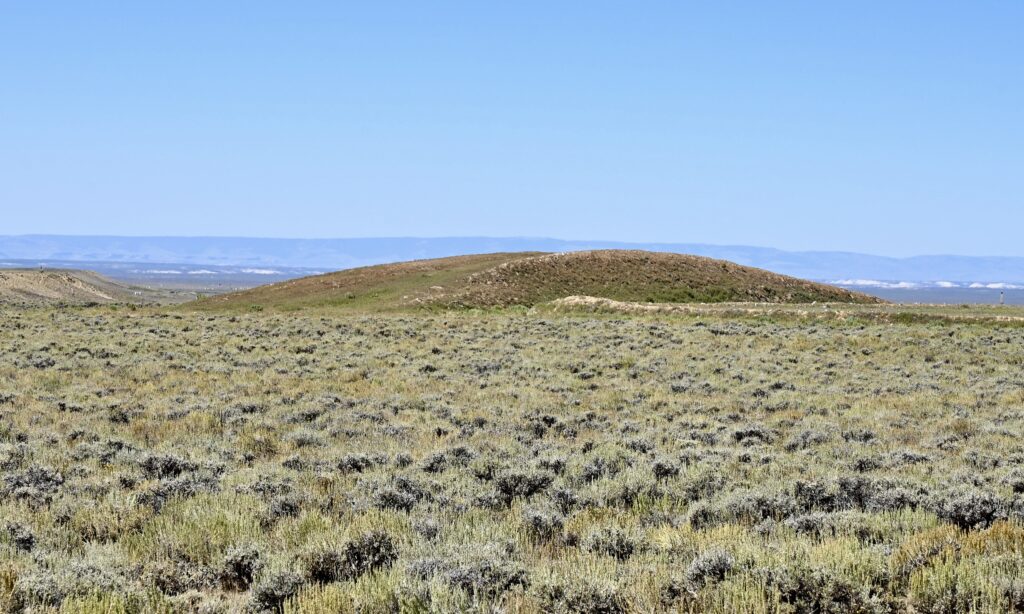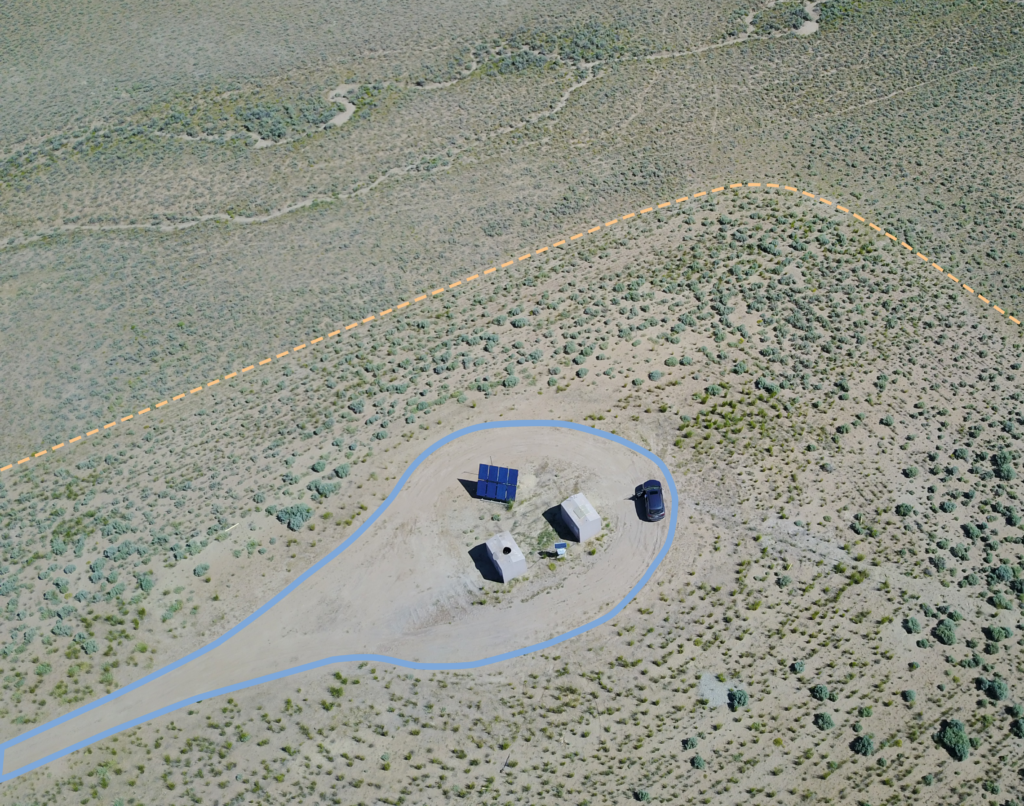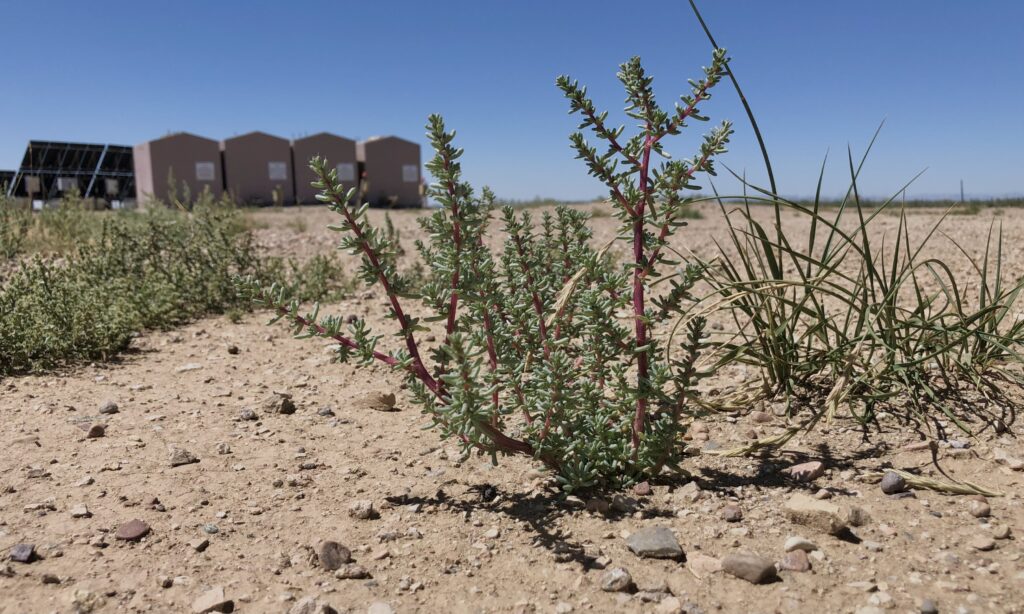Restoration of natural gas well pads is plagued by invasion from annual forbs and grasses. Exotic annual forbs particularly are well suited to the sandy, salty, disturbed soils found on natural gas well pads in the Upper Green River Basin of southwestern Wyoming. While conducting research this summer on well pads in the Upper Green River Basin, we noticed that Russian thistle (Salsola species), desert madwort (Alyssum desertorum), and halogeton (Halogeton glomeratus) appear to especially thrive on some restored well pads.Salsola tends to dominate soil stockpiles during periods of well construction (personal observation). Stockpiles are regions where topsoil—which has been scraped and removed from well pads to prepare for development—is compacted and stored until restoration begins. These stockpiles provide enhanced conditions for Salsola, whose seeds can persist in the soil for a couple of years.1 The stockpiles remain in place for several years in some cases2 before they are redistributed across well pads to prepare for restoration.

Typical soil stockpile constructed during well pad development. Dark green patches on the stockpile are Salsola spp. Photo by Damaris Chenoweth.
A. desertorum is also plentiful on well pads. It is especially dense in the unreclaimed areas that surround permanent well infrastructure (highlighted by a blue boundary in the image below). Preliminary data that we collected this summer show that A. desertorum cover is significantly higher on well pads compared to the surrounding undisturbed area (bounded by yellow in the below image). A. desertorum is well suited to disturbed bare soils and its ability to germinate in the fall and overwinter3 may allow it to outcompete native annual forbs.

H. glomeratus is a salt-loving exotic annual forb that grows readily on natural gas well pads. It thrives in soils with high salinity, which are less suitable to many native plants.4 High salinity has also been tied to reduced plant cover which leaves gaps for exotics like H. glomeratus to emerge each spring.5

The apparent dominance of these exotic annuals on disturbed bare soils begs questions about how the soil seed bank is altered by well pad construction and restoration. Undergraduate student Kate Edwards (Yale College ’24) collected seed bank samples on and off of natural gas well pads this summer and is conducting a greenhouse emergence experiment in the fall to characterize the composition and abundance of seeds in the soil. We expect her research to elucidate information about the spatial patterns of the seed bank and the abundance of exotic annual forbs, which may be useful in designing weed management or monitoring procedures on restored well pads.
Works Cited
1. DiTomaso, J. M. & Kyser, G. B. Russian-thistle (tumbleweed) and barbwire Russian-thistle. in Weed Control in Natural Areas in the Western United States 544 (2013).
2. Mason, A., Driessen, C., Norton, J. & Strom, C. First year soil impacts of well-pad development and reclamation on Wyoming’s sagebrush steppe. 8 (2011).
3. Meyer-Morey, J. Impacts of a non-native forb, Alyssum desertorum Stapf., and non-target effects of Indaziflam in the sagebrush steppe of Yellowstone National Park. (Montana State University, 2021).
4. USDA, USFS. Halogeton glomeratus. Fire Effects Information System (FEIS) https://www.fs.usda.gov/database/feis/plants/forb/halglo/all.html.5. Eldridge, J. D., Redente, E. F. & Paschke, M. The use of seedbed modifications and wood chips to accelerate restoration of well pad sites in Western Colorado, U.S.A. Restoration Ecology20, 524–531 (2012).
STUDENT RESEARCHER

Damaris Chenoweth, Western Resource Fellow | Damaris is a plant community ecologist and doctoral student at Yale School of the Environment. Her dissertation work focuses on restoration and recovery dynamics of big sagebrush plant communities at natural gas disturbances in southwestern Wyoming. She is particularly interested in the role of recruitment and early successional dynamics in determining restoration outcomes under climate change and uses a combination of field work and simulation modeling to investigate these topics. Damaris is from Princeton, New Jersey and has a BA in Biology from Skidmore College and an MESc from Yale School of the Environment. See what Damaris has been up to. | Blog
